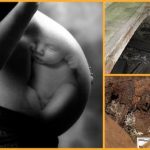2,200-year-old “sleeping beauty” found wearing sheepskin coats in a Swiss forest.
It’s said that the sleeping beauty died more than 2,200 years ago.
The discovery of a pristine, ancient tomb led to the discovery of armor and weapons that date back hundreds of years.
But archaeologists believe that this ancient tomb was actually created as a side tomb – like the terracotta warriors guarding Qin Shi-Huang’s main tomb, but on a much smaller scale.

It took many years for the main tomb to be found in a forest full of older trees.
The special thing about the owner of this tomb is that his body was buried in a hollow tree. It is also close to the side tomb.
Archaeologists were in disbelief when they found the woman’s body intact after thousands of years. She was approximately 40 years old when she died and it was a lucky find.
The media nicknamed her “Sleeping Beauty” because of the dozens of sheepskin coats she wore, her expression very peaceful as if she was sleeping in a coffin.

It has been determined that the woman in the coffin is Celtic. The Iron Age Celts were famous for burying their tribe members in tree coffins.
A woman who lived 2,200 years ago, in what is now Greece, died at the age of 40 and research showed her to be noble because she had more leisure time.
The woman was buried with some jewelry, including a bronze bracelet, a very elaborate bronze belt, and a necklace with amber wrapped around it. These items were only for royalty or the aristocracy.

The teeth showed that the woman liked to eat sugar and starch, which suggests she was not one of nobility but didn’t live more than 2,000 years ago.
The body of the “beauty” was still intact after laying around for thousands of years. Archaeologists believe that maybe the dirt surrounding her gathered up natural causes that had an embalming effect on her, or maybe the coffin itself displayed a prophylactic quality that prevented infection.
Ancient Celtic rituals and beliefs revolve around the idea that the soul is immortal and will move from one body to another after death. When they were still alive, they would bury their dead in a sacred tree to ensure that the soul is protected during its journey.

Historians claim that the Celts had a history of equal gender rights. This belief is contradicted by burial practices where nobility was buried in burial sites outside, while regular peasants were buried inside.
Ancient Romans have finally uncovered what was hidden from them. New insights into Celts and their living habits have helped give archaeologists unexpected new insights.




